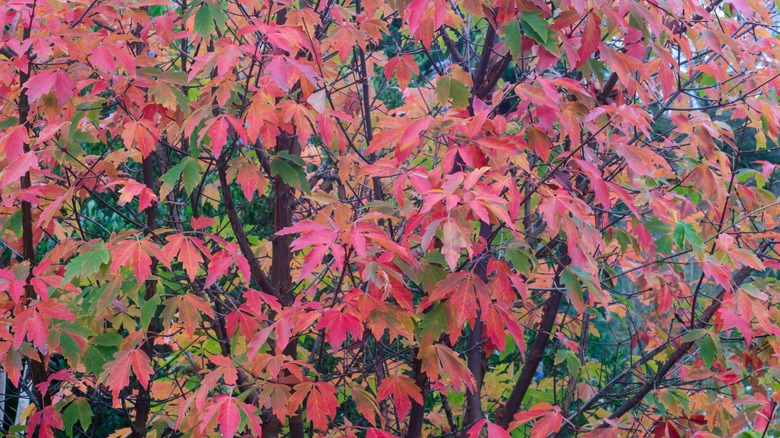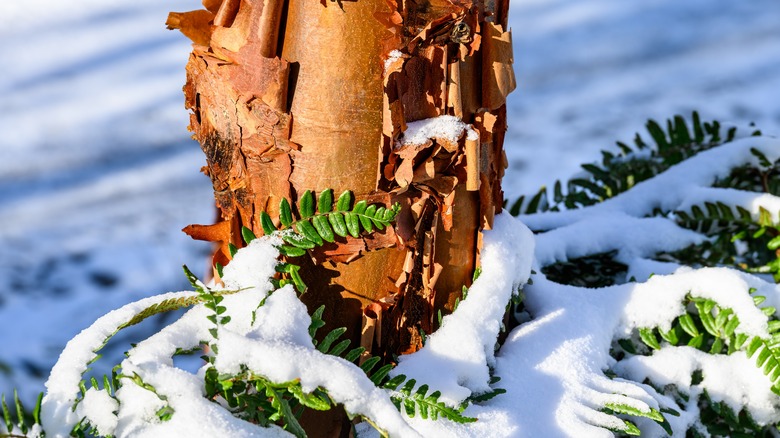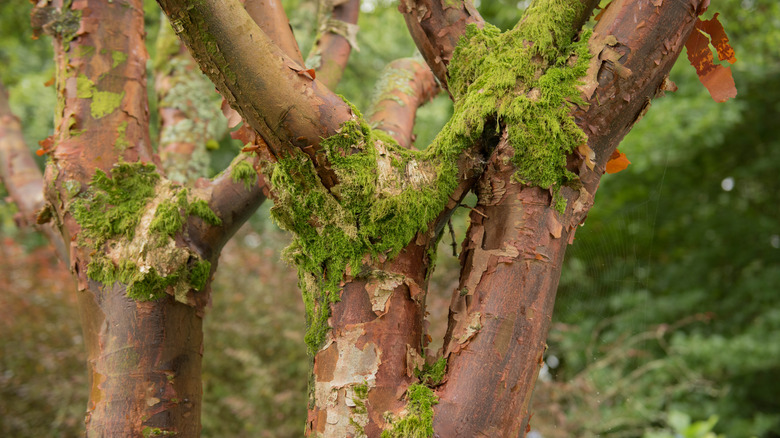Plant This Pretty Maple Tree In Your Backyard & Watch Its Bark Sparkle All Year Long
Changing leaves in the fall, winter's first snow, buds of spring, and flowers in summer are the stuff of poetry. A four-season climate is a gift, but it has its downsides. In much of the country, the winters seem to get longer and grayer every year. Most of us are hungry to spot some color in our landscape during this bleak time. Plants with year-round appeal are a treat for snow-weary eyes. Don't limit your winter garden to empty branches and evergreens. Try some plants with standout bark to make things interesting after the leaves fall.
Paperbark maple trees (Acer griseum) are great candidates for brightening the gloom. These trees are perfect for a small garden, and their long-lasting fall leaves and eye-catching bark provide pops of color in the darker times of the year. What's more, they're easy to care for and can grow well in a wide variety of regions. These graceful maples may become your new favorite tree.
Why should you plant a paperbark maple?
Does your outdoor space need a "specimen tree"? People choose a specimen tree as a highlight for a yard or garden. Typically planted alone, specimen trees like ornamental cherries, Japanese maples, and magnolias are meant to hog all the attention. With glowing bark that peels naturally into little scrolls and curlicues, paperbark maples fit the bill for a specimen tree. Acer griseum gets extra points for being a low-maintenance tree that you will want in your landscaping.
Seeing a tree shed its bark in coils can be cause for alarm, but for Acer griseum, it's par for the course. This natural process, called exfoliation, reveals brightly colored new bark as it curls away. Underneath, the bark can take on different looks. You may spot smooth bark in one color ranging from light brown to dark purple, or a trunk might look as though it's been painted with watercolors.
While Acer griseum's bark may get all the attention, its leaves also deserve some credit for its beauty. Its spring buds are purplish-green and unfurl into bright green leaves. Greenish-yellow flowers appear at the same time. These blooms morph into purplish-brown seed pods that spiral to the earth in autumn when its leaves turn orange, red, or purple. The leaves tend to reach their peak fall colors later than those of other trees, and the foliage can cling to branches for several months.
What do paperbark trees need to thrive?
With the ability to flourish in U.S. Department of Agriculture (USDA) zones 4 to 8, there are few places in the continental United States that can't accommodate the paperbark maple. This tree, which was introduced from China at the turn of the last century, tolerates all but the coldest and hottest regions of the U.S. They don't tolerate drought well, and in hot, dry regions, they might suffer leaf burn. Adding mulch and thoroughly watering the base of the tree can help protect the it in these conditions.
Paperbarks aren't very particular about their soil. They settle well into earth that's slightly alkaline or slightly acidic, provided it stays moist and well drained. Acer griseum can grow in soils rich in clay, loam, or sand. It also needs little to no pruning. Along with these accommodating qualities, its branches are strong and resist breakage, and its dispersed canopy creates ideal conditions for ground cover plants that love shade around its base.
There's no need for concern about paperbark maples becoming invasive; although they aren't native species in the U.S., they don't spread easily. It's estimated that up to 95% of their seeds aren't viable, and they don't reproduce well from cuttings.


